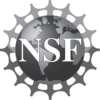
It had been more than 10 years since the two-star system known as U Scorpii had erupted into one of its unpredictable bursts of brightness. Then yesterday morning, two amateur astronomers in Florida observed this “recurrent nova” come to life.
Barbara Harris spotted it first and Shawn Dvorak soon confirmed. They notified the American Association of Variable Star Observers, triggering a frenzy of observations around the world. That frenzy, which includes both serious backyard astronomers and professional researchers using such instruments as the Hubble telescope, will likely continue for the next few months, according to a report at Universe Today.
Because recurrent nova systems like U Scorpii are rare birds in the astronomical zoo, researchers are very curious about them. A nova consists of a pair of stars in close orbit around each other, one relatively ordinary, the other a super-dense object known as a white dwarf. Hydrogen gas from the ordinary companion falls on to the white dwarf, where the intensely strong gravity compresses and heats the gas, setting off a thermonuclear blast.

The energy burst from such a blast is what citizen astronomers Harris and Dvorak spotted on Thursday. Science for Citizens salutes them both. What a remarkable feat!
For more details see Sky and Telescope’s report, Thar She Blows!
Visit the variable star association’s site to learn about the significant impact that citizen astronomers have been making for decades and about the value of pro-am collaborations.
By the way, our thanks to John T. Collier for bringing this news to our attention just as it was happening.

